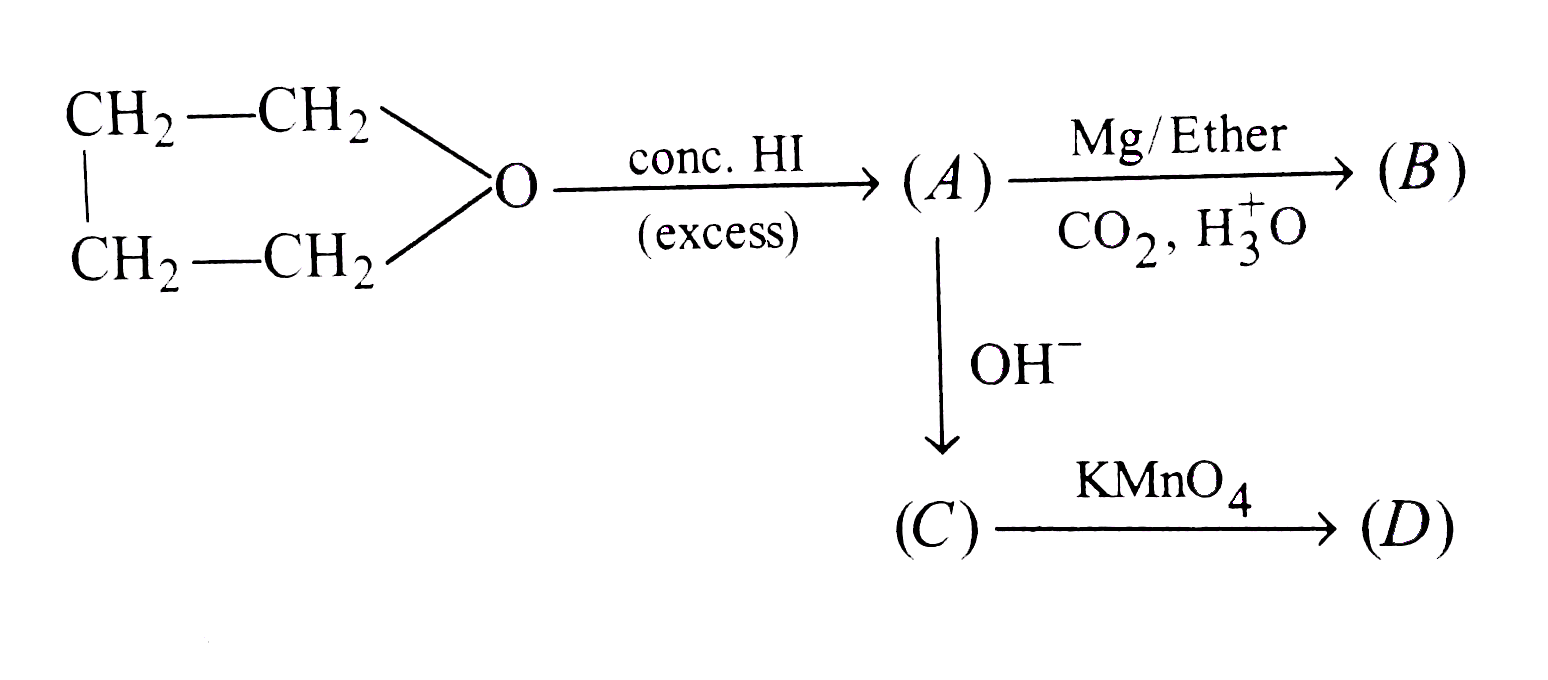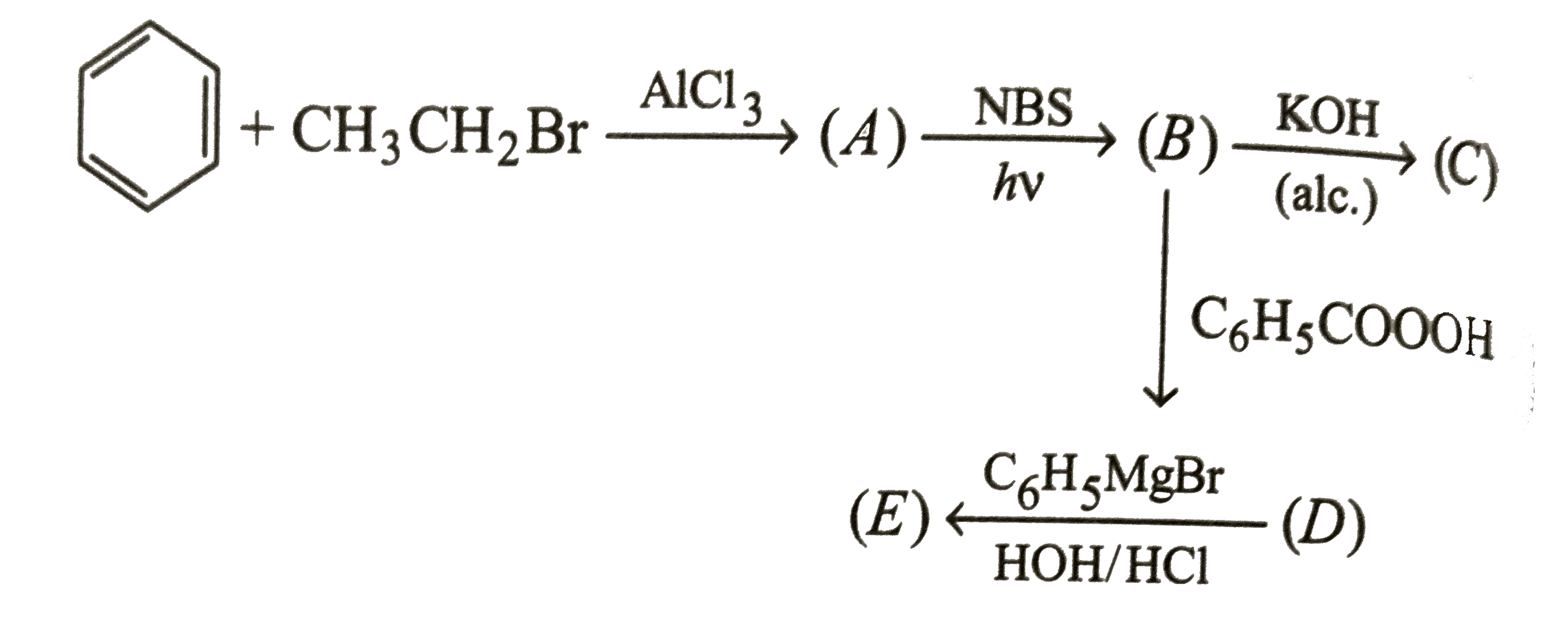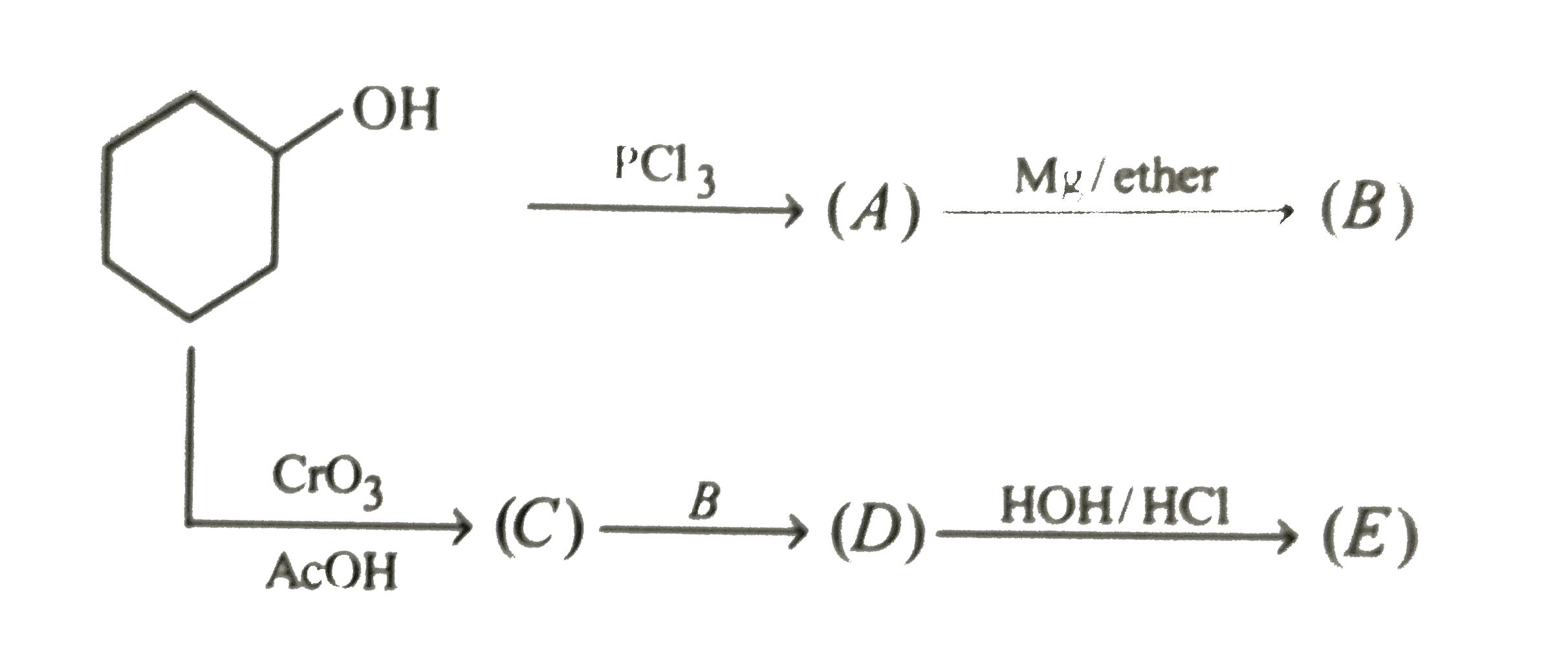Complete the following reactions :
U+ClF3→
To complete the reaction of uranium (U) with chlorine trifluoride (ClF₃), we need to follow these steps:
Step 1: Identify the oxidation states
- Uranium (U) is in the 0 oxidation state.
- In ClF₃, chlorine (Cl) has an oxidation state of +3 (since F is -1 and there are three fluorine atoms: x+3(−1)=0 gives x=+3).
Step 2: Determine the products
- ClF₃ acts as an oxidizing agent, which means it will oxidize uranium.
- Uranium will be oxidized from 0 to +6 oxidation state, forming uranium hexafluoride (UF₆).
- Chlorine will be reduced from +3 to +1 oxidation state, forming chlorine monofluoride (ClF).
Step 3: Write the unbalanced reaction
The initial unbalanced reaction can be written as:
U+ClF₃→UF₆+ClF
Step 4: Balance the reaction
- We have 1 U atom on both sides.
- For chlorine, we have 1 Cl in ClF on the product side and 3 Cl in ClF₃ on the reactant side.
- For fluorine, we have 6 F in UF₆ and 3 F in ClF₃, making a total of 9 F atoms on the reactant side.
To balance the reaction, we can adjust the coefficients:
U+3ClF₃→UF₆+3ClF
Final Balanced Reaction
The balanced reaction is:
U+3ClF₃→UF₆+3ClF
- Uranium (U) is in the 0 oxidation state.
- In ClF₃, chlorine (Cl) has an oxidation state of +3 (since F is -1 and there are three fluorine atoms: x+3(−1)=0 gives x=+3).
- ClF₃ acts as an oxidizing agent, which means it will oxidize uranium.
- Uranium will be oxidized from 0 to +6 oxidation state, forming uranium hexafluoride (UF₆).
- Chlorine will be reduced from +3 to +1 oxidation state, forming chlorine monofluoride (ClF).
The initial unbalanced reaction can be written as:
U+ClF₃→UF₆+ClF
- We have 1 U atom on both sides.
- For chlorine, we have 1 Cl in ClF on the product side and 3 Cl in ClF₃ on the reactant side.
- For fluorine, we have 6 F in UF₆ and 3 F in ClF₃, making a total of 9 F atoms on the reactant side.
U+3ClF₃→UF₆+3ClF
The balanced reaction is:
U+3ClF₃→UF₆+3ClF
Topper's Solved these Questions
- P-BLOCK ELEMENTSBook:CBSE COMPLEMENTARY MATERIALChapter:P-BLOCK ELEMENTSExercise:SHORT ANSWER-II TYPE QUESTIONS
Explore 34 Videos
- P-BLOCK ELEMENTSBook:CBSE COMPLEMENTARY MATERIALChapter:P-BLOCK ELEMENTSExercise:VERY SHORT ANSWER TYPE QUESTIONS
Explore 42 Videos
- P-BLOCK ELEMENTSBook:CBSE COMPLEMENTARY MATERIALChapter:P-BLOCK ELEMENTSExercise:LONG ANSWER TYPE QUESTIONS
Explore 15 Videos
- HALOALKANES AND HALOARENESBook:CBSE COMPLEMENTARY MATERIALChapter:HALOALKANES AND HALOARENESExercise:CONCEPTUAL QUESTIONS
Explore 10 Videos
- POLYMERS Book:CBSE COMPLEMENTARY MATERIALChapter:POLYMERS Exercise:LONG ANSWER TYPE QUESTIONS
Explore 5 Videos
Similar Questions
Knowledge Check
Formation of ClF3 from Cl2andF2 is an exothermic process . The equilibrium system can be represented as
Cl2(g)+3F2(g)⇒2ClF3(g),ΔH=−329kJ Which of the following will increase quantity of ClF3 in the equilibrium mixture ?AIncrease in temperature , decrease in pressure addition of Cl2BDecrease in temperature and pressure , addition of ClF3CIncrease in temperature and pressure , removal of Cl2DDecrease in temperature , increase in pressure , addition of F2The exothermic formation of ClF3 is represented by thr equation:
Cl2(g)+3F2(g)⇔2ClF3(g),ΔH=−329kJ
Which of the following will increase the quantity of ClF3 in an equilibrium mixture of Cl2,F2, and ClF3?AIncreasing the temperatureBRemoving Cl2CIncreasing the volume of the containerDAdding F2
Complete the following chain of reactions:

View SolutionComplete the following chain of reactions :

View SolutionComplete the following reaction :
CH3COOH→NaHCO3→
View SolutionOn the basis of VSEPR theory, prefict the shapes of the following molecules ions :
(i)ClF3 (ii)BrF5 (iii)IF7 (iv)H3O+ion.
View Solution(a) Complete the following chemical reaction equations :
(i) P4+SO2Cl2→
(ii) XeF6+H2O→
(b) Predict the shape and the asked angle (90∘ or mor or less) in each of the following cases :
(i) SO2−3 and the angle O−S−O
(ii) ClF3 and the angleF−Cl−F
(iii) XeF2 and the angle F−Xe−F
View SolutionThe number of molecules deviating from octet rule among the following is, [PCl3,BCl3,B2H6,CO,AlCl3,ClF3,CO2,]
View Solution
